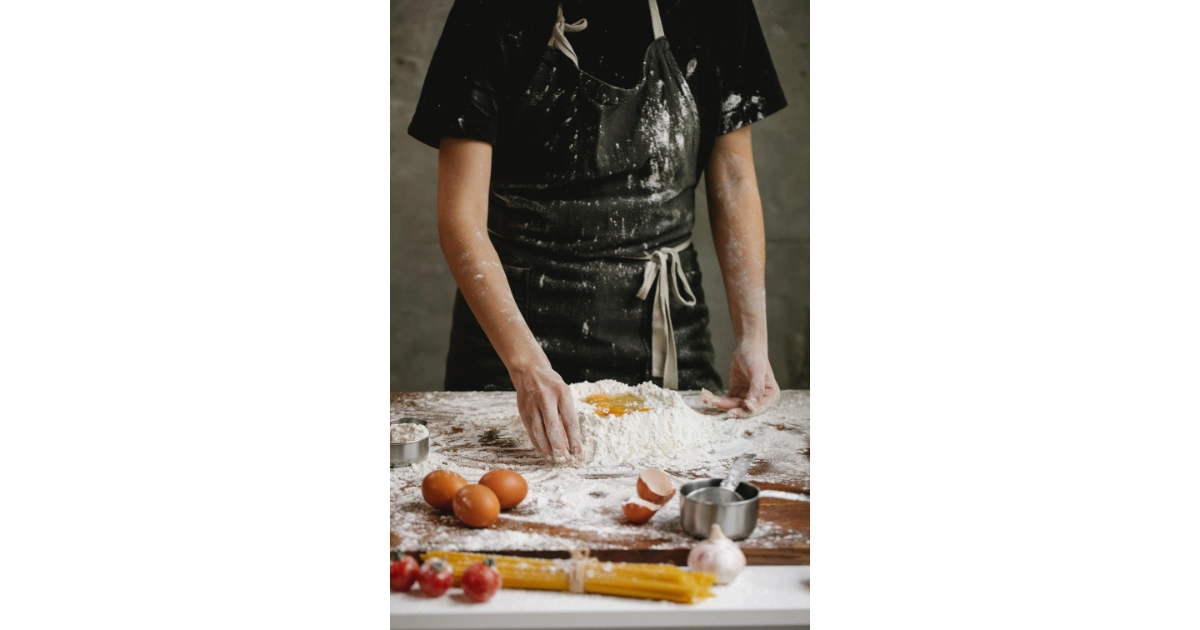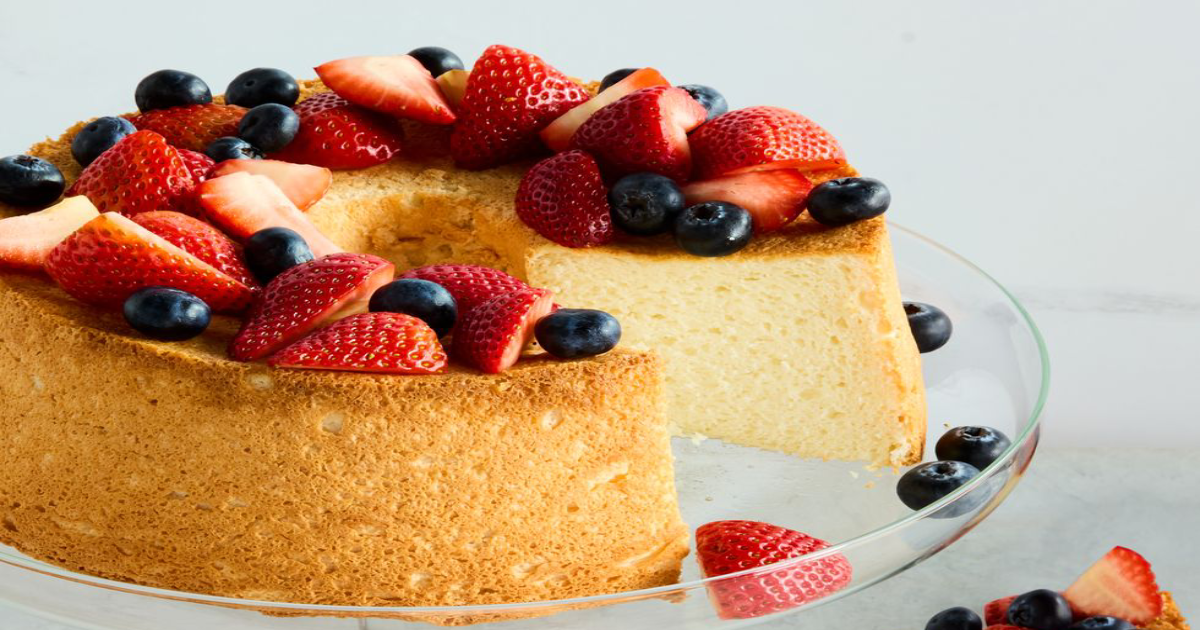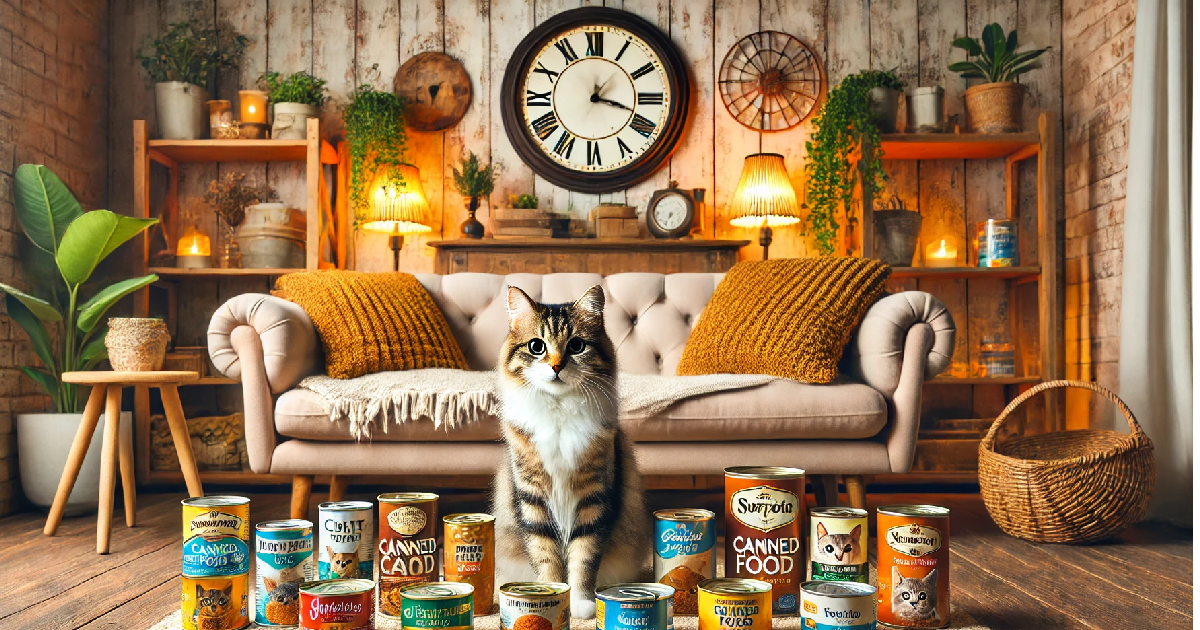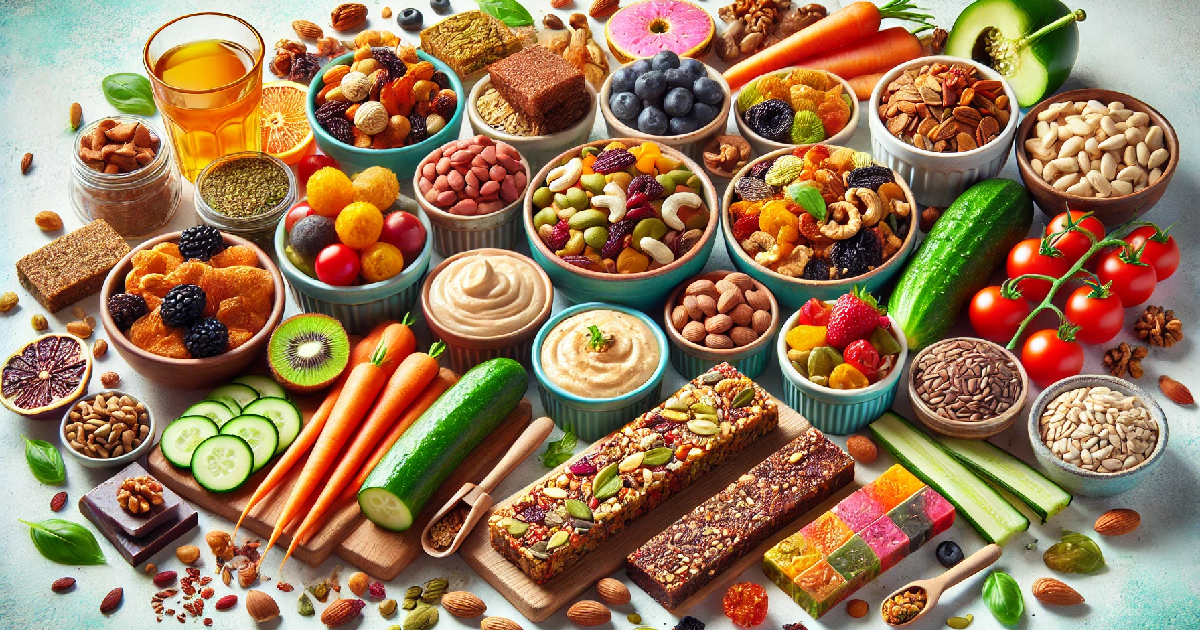If you work in a commercial kitchen, the possibility of cross-contamination resulting from food contact surfaces must be diligently monitored and managed. Food contact surfaces can range from the apparent plates and utensils to seemingly innocuous items like baskets or aprons – but which item does not have a food contact surface? To better inform your safety protocols, we explore what defines a food contact surface and how to ensure every kitchen item adheres to strict health standards.
The Dangers Of Non-Food Contact Surfaces
When we think of food safety, we often jump to the obvious culprits, such as raw meats or unpasteurized dairy products. However, it’s important to consider the less obvious hazards, namely non-food contact surfaces. These surfaces, while not coming into direct contact with our food, can still pose a significant threat to our health. Take, for instance, a cutting board used to prepare raw chicken. If not properly sanitized, harmful bacteria can linger on its surface and contaminate the next thing that comes into contact with it. It’s not just cutting boards, either; countertops, utensils, and even the handles of refrigerators can all be safe if appropriately maintained. In short, we can’t afford to overlook the dangers of non-food contact surfaces regarding our food safety.
Understanding The Different Types Of Food Contact Surfaces
Whether running a restaurant or cooking at home, food safety is paramount. It’s essential to know the different types of surfaces that come in contact with your food and how to keep them clean and sanitary. There are three main categories of food contact surfaces: porous, non-porous, and food-grade. Porous surfaces like wood and cardboard have tiny nooks and crannies that can harbour bacteria and other germs. Non-porous surfaces, like metal and plastic, are easier to clean and disinfect but can still be scratched or damaged. Finally, food-grade surfaces are specifically designed for direct food contact and are typically made of materials like stainless steel or food-grade plastics. By understanding these different types of surfaces and how to clean and maintain them properly, you can do your part to make sure your food is healthy and safe.
Joint Non-Food Contact Surfaces Found In Homes And Businesses

When we think of cleaning our homes and businesses, our minds often go straight to the floors and countertops. However, it’s important to recognize the non-food contact surfaces lurking around every corner. These surfaces may not come into direct contact with our food, but they can still harbour harmful bacteria and viruses if not regularly cleaned and disinfected. Common non-food contact surfaces can quickly become breeding grounds for germs, from doorknobs to light switches to computer keyboards. Regularly cleaning and disinfecting these surfaces can help ensure a safer and healthier environment for ourselves and those around us.
What Are The Regulations Around Food Contact And Non-Food Contact Surfaces
When we go out to eat or grab a quick snack, we rarely think about the surfaces that come into contact with our food. However, food and non-food contact surfaces are subject to strict regulations to ensure our safety. Food contact surfaces, such as utensils and cutting boards, must be non-toxic, durable, and easy to clean. Non-food contact surfaces, like floors and walls, must also meet specific requirements to prevent contamination. These regulations are in place to safeguard against harmful bacteria and chemicals that can cause foodborne illness. So the next time you sit down for a meal, take comfort in knowing that your health is being prioritized through the regulations surrounding food and non-food contact surfaces.
Tips To Identify a Non-Food Contact Surface
As we navigate our daily lives to assist in controlling the spread of bacteria and germs, it’s crucial to pay attention to the surfaces we come into contact with. While we may be familiar with identifying food contact surfaces, such as kitchen countertops and cutting boards, it’s also crucial to recognize non-food contact surfaces. These include areas like doorknobs, light switches, and elevator buttons. One helpful way to identify these surfaces is to consider whether they situate in an area where food is prepared and consumed. Additionally, non-porous materials like metal and plastic are often used for non-food contact surfaces because they can easily sanitize. Being aware of and properly identifying these areas in our daily lives can help us stay healthy and prevent the spread of illness.
How To Safely Dispose Of Non-Food Contact Surfaces?
Removing non-food contact surfaces is important to do so safely and responsibly. Whether it’s old furniture, appliances, or other household items, these items can often pose a risk to humans and nature if not disposed of properly. The first step is identifying what can and cannot throw away. It’s important to consult with your local waste management facility to find out the proper disposal methods for each item. Many communities offer recycling services for items such as electronics and certain plastics. Additionally, hazardous materials such as paint, batteries, and chemicals should dispose of at a hazardous waste facility to prevent contamination and harm. By taking the time to research proper disposal methods, you can ensure that you’re doing your part to protect both yourself and the world around you.
What Causes Food Poisoning?
Food poisoning is a serious and common occurrence affecting millions yearly, leading to symptoms such as diarrhoea, vomiting, and stomach cramps. Yet, what exactly causes food poisoning? The answer lies in contaminated food. This can occur when food comes into contact with harmful bacteria, viruses, or parasites, which can survive in various places such as soil, water, animals, or food processing facilities. In addition, poor food hygiene practices, such as improper storage and preparation, can also contribute to food contamination. It is important to be aware of these factors and take necessary precautions to prevent food poisoning. By following food safety guidelines and being aware of potential risks, we can protect ourselves and our loved ones from the harmful effects of contaminated food.
What Are The Three Main Sources Of Food Contamination?
The three main sources of food contamination are:
- Biological Contamination: This type of contamination occurs when harmful microorganisms such as bacteria, viruses, parasites, or fungi contaminate the food. Common examples include Salmonella, E. coli, norovirus, and Campylobacter. Biological contamination can occur at any stage of the food production process, from farming and processing to storage and preparation.
- Chemical Contamination: Chemical contamination happens when food comes into contact with harmful chemicals, either directly or indirectly. Chemicals can contaminate food through pesticides, cleaning agents, food additives, environmental pollutants, or improper use of food-grade chemicals. Chemical contaminants include heavy metals, pesticides, cleaning solvents, and allergens.
- Physical Contamination: Physical contamination refers to foreign objects in food that can cause harm if consumed. These objects can be accidental inclusions during food processing, packaging, or handling. Common examples include metal fragments, glass shards, plastic pieces, hair, or pests like insects or rodents.
Which Is An Example Of a Non-Food Contact Surface Dustpan?
If you are looking for a dustpan that can use for cleaning purposes but does not come in contact with your food, then you need to be aware of some of the non-food contact surface options available in the market. These dust pans often have a plastic body and a handle that makes it easy to pick up the dust and dump it in the trash can. They design so that they do not have crevices or edges that can harbour food particles or other debris. This makes them a great choice for cleaning floors, carpets, and other surfaces that do not require food processing or handling. So, if you want to keep your cleaning tools separate from your cooking utensils, investing in a non-food contact surface dustpan is a wise choice.
What Is Used To Wash Food Contact Surfaces?
Regarding ensuring the cleanliness and safety of your food, paying attention to the surfaces it comes into contact with is crucial. These surfaces, known as food contact surfaces, must be diligently cleaned to prevent any harmful bacteria or substances from contaminating your food. So what exactly is used to wash these surfaces? The answer is simple: a specialized cleaning solution formulated to target and eliminate any potential contaminants. These solutions are designed to be safe for use on food contact surfaces, making them essential for maintaining a hygienic kitchen and protecting the health of those dining there.
Water Hardness Can Affect Cleaning By Servsafe
The hardness of water can have a significant impact on the effectiveness of cleaning in the food industry. Water hardness means the amount of calcium and magnesium in the water. When hard water is used to clean food surfaces, it can leave behind mineral deposits that can harbour bacteria. This will compromise the efficacy of food surface disinfectant, hindering it from effectively removing germs that can cause foodborne illnesses. To ensure optimal cleaning, it is important to use soft water to clean food surfaces. Soft water contains fewer minerals and is less likely to leave behind mineral deposits. Food service establishments can use soft water to ensure their cleaning procedures effectively eliminate harmful bacteria.
Proper Cleaning And Sanitizing Of Food Equipment
Proper cleaning and sanitizing of food equipment is critical in food preparation. It is the only way to ensure that harmful bacteria and other microorganisms remove and that food is safe for consumption. However, many people need to pay more attention to the importance of cleaning equipment that does not have a food contact surface. This can include tools such as cutting boards, tongs, and measuring cups. These items can still harbour harmful bacteria, so cleaning and sanitizing them regularly is essential. You can maintain a safe and healthy food preparation environment by properly cleaning and sanitizing all food equipment.
Where Should Sanitizing Chemicals Be Stored?
Knowing where to store sanitizing chemicals is essential to ensure a safe and healthy environment. Considering these chemicals kill bacteria and germs, they should be stored separately from food or food-related items. It’s crucial to note that any equipment or item that does not have a food contact surface is the perfect place to store these chemicals. This could be a cabinet or a separate room designated for the storage of these products. Storing sanitizing chemicals incorrectly can be hazardous, and it’s paramount to adhere to the proper storage guidelines for the safety of everyone.
Which Item Must Be Cleaned And Sanitized?
Cleaning and sanitizing are crucial in maintaining a safe and hygienic environment in any kitchen. However, not all items require the same level of attention. In fact, one item, in particular, must be cleaned regularly but only needs to be sanitized if it comes into contact with food or other contaminants. This item is any non-food contact surface such as walls, floors, and ceilings. While these surfaces do not come into direct contact with food, they are still important to clean and maintain to control the spread of bacteria and other harmful microorganisms. So if you need help determining which item in your kitchen needs to sanitize, remember that anything with a food contact surface requires disinfecting. In contrast, non-food contact surfaces should regularly clean to maintain a safe and healthy environment.
Use Hand Antiseptic Before Washing Hands
When it comes to hand hygiene, most of us know that washing our hands regularly is crucial in preventing the spread of germs. But did you know that using hand antiseptic before washing your hands can further reduce the risk of contamination? While many hand sanitizers claim to have “food-safe” formulations, their effectiveness in killing bacteria and viruses cannot be compared to those designed specifically for disinfecting hands. This is particularly important in food service settings where the item has no food contact surface, and the product must properly handle to prevent contamination. So, the next time you wash up, using a hand antiseptic beforehand may give you the extra protection you need.
When Holding Food Without Temperature Control?
When holding food without temperature control, it’s important to remember that the item should not have a food contact surface. This means that any utensils used to hold the food, such as tongs or spatulas, should not come into direct contact with the food itself. Instead, it’s recommended to use a food-grade container or equipment with a food contact surface that has been appropriately sanitized before use. Additionally, monitoring the food regularly is important to ensure it does not rise above the risk with temperatures of 40°F to 140°F, where bacteria can grow rapidly. Being vigilant about food safety practices can prevent foodborne illness and make sure a happy and healthy dining experience.
How Can An Operation Prevent Cross-Contamination In A Food Contact Surface?
Preventing cross-contamination in a food contact surface is crucial to maintaining sanitary conditions in any food service operation. Several steps can take to ensure that a food contact surface remains free of harmful bacteria. One important measure is to regularly clean and sanitize the surface using a food-grade cleaner. Additionally, it is important to train employees on proper food handling techniques to avoid touching the surface with dirty hands or utensils. Implementing a colour-coding system for utensils and cutting boards can also help to prevent cross-contamination. By taking proactive steps to prevent cross-contamination, food service operators can help ensure the safety and health of their customers.
Do Glasses Have a Food Contact Surface?
Many wonders if glasses have a food contact surface, especially if they plan to use their eyeglasses to hold food or drinks. According to industry standards, eyeglasses do not have a food contact surface. While it may seem like glasses come into contact with food or drink because we wear them on our faces, they do not meet the existing food contact surface criteria. This means that glasses are not designed, tested, or regulated as food contact materials. Therefore, using glasses as makeshift utensils or food containers is unsafe. It is essential to take proper food safety precautions and use appropriate materials for consuming food and drink.
Tabletop Food Service Equipment On Legs
Tabletop food service equipment on legs is a smart investment for any commercial kitchen looking to maximize usable space and improve efficiency. These compact and durable units elevate appliances like grills, fryers, and steamers to a comfortable working height while also providing essential storage space underneath. Using the right sanitising solutions is essential to keep your tabletop food service equipment clean and safe. Sanitisers work best when the surface is free of debris and buildup, so clean your equipment thoroughly before applying sanitiser. With the right equipment and a commitment to sanitation, your tabletop food service setup can be a reliable and effective hub for delicious meals and happy customers.
Where Should Wiping Cloths Be Stored When Not In Use?
Wiping cloths are essential in keeping surfaces clean and tidy in any environment where food is handled or served. It is important to ensure these clothes are appropriately stored when not in use to avoid the risk of cross-contamination. The best practice is to store wiping cloths separately from any surfaces that come into contact with food. This can include designated storage containers or labelled areas to ensure they are used exclusively for wiping cloths. It is also important to note that wiping cloths should not have a food contact surface and should be washed and sanitized regularly to prevent bacteria growth. Maintaining these guidelines can help ensure a safe and clean food preparation and service environment.
Which Item Does Have a Food Contact Surface?

It is crucial to identify which items have a food contact surface, as this can affect the safety of the food we consume. However, it is equally important to recognize which items do not have a food contact surface. These items may still come into contact with food, but in a way that is not harmful to our health. For example, a utensil used to stir a pot of soup may touch the surface of the soup, but it does not have a food contact surface because it does not intend to touch the food directly. Understanding the various items in our kitchen and how they interact with food can enhance our awareness of food safety and make us more mindful of our food preparation habits.
Conclusion
It is important to be familiar with the different types of food contact and non-food contact surfaces for the health and safety of yourself and others. Non-food contact surfaces have the potential to cause contamination of food, which can lead to illness or even death, so it’s essential to be able to identify a non-food contact surface in order to avoid using them in food preparation. By understanding what regulations are associated with each type of surface and following the tips for identifying a non-food contact surface, you can help keep people safe and healthy by preventing the spread of illness. Furthermore, having proper procedures for disposing of non-food contact surfaces is also key to preventing contamination and protecting the environment from hazardous materials. These simple steps can ensure everyone’s health and well-being when preparing food.
FAQ:
1. What Is a Food Contact Surface?
A food contact surface refers to any surface or material directly interacting with food during production, processing, preparation, or serving. It can include countertops, cutting boards, utensils, equipment, and packaging materials.
2. What Are The Different Types Of Food Contact Surfaces?
Different types of food contact surfaces include:
-
Stainless steel
-
Plastic (food-grade)
-
Glass
-
Ceramic
-
Wood (specific hardwoods like maple for cutting boards)
3. What Are The Requirements For Food Contact Surfaces?
Requirements for food contact surfaces include:
-
Smooth and non-porous
-
Non-reactive with food
-
Durable
-
Easy to clean and sanitize
-
Non-toxic (food-grade)
4. How Do I Know If An Item Is Safe For Food Contact Surfaces?
To determine if an item is safe to use as a food contact surface:
-
Look for labels or certifications indicating it is food-grade or approved for food contact.
-
Consider materials commonly used for food contact surfaces.
-
Ensure the item is smooth, non-porous, and non-reactive with food.
-
Follow local health and safety guidelines.
5. What Common Materials Are Not Safe To Use As Food Contact Surfaces?
Common materials not safe for food contact surfaces include:
-
Unfinished or porous wood
-
Copper or brass
-
Non-food-grade plastics
-
Galvanized metal

























